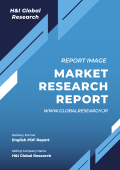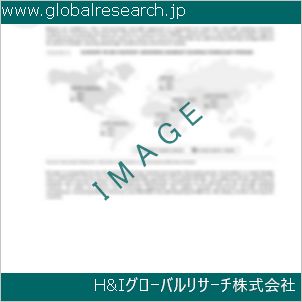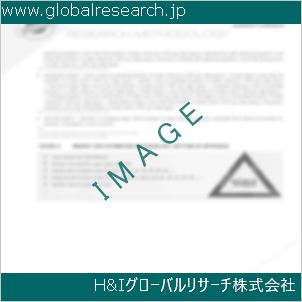Table of Contents
1 Industry Overview of Putrescine
1.1 Definition and Specifications of Putrescine
1.1.1 Definition of Putrescine
1.1.2 Specifications of Putrescine
1.2 Classification of Putrescine
1.3 Applications of Putrescine
1.3.1 Nuclear Application
1.3.2 Non-Nuclear Application
1.4 Industry Chain Structure of Putrescine
1.5 Industry Overview and Major Regions Status of Putrescine
1.5.1 Industry Overview of Putrescine
1.5.2 Global Major Regions Status of Putrescine
1.6 Industry Policy Analysis of Putrescine
1.7 Industry News Analysis of Putrescine
2 Manufacturing Cost Structure Analysis of Putrescine
2.1 Raw Material Suppliers and Price Analysis of Putrescine
2.2 Equipment Suppliers and Price Analysis of Putrescine
2.3 Labor Cost Analysis of Putrescine
2.4 Other Costs Analysis of Putrescine
2.5 Manufacturing Cost Structure Analysis of Putrescine
2.6 Manufacturing Process Analysis of Putrescine
3 Technical Data and Manufacturing Plants Analysis of Putrescine
3.1 Capacity and Commercial Production Date of Global Putrescine Major Manufacturers in 2023
3.2 Manufacturing Plants Distribution of Global Putrescine Major Manufacturers in 2023
3.3 R&D Status and Technology Source of Global Putrescine Major Manufacturers in 2023
3.4 Raw Materials Sources Analysis of Global Putrescine Major Manufacturers in 2023
4 Capacity, Production and Revenue Analysis of Putrescine by Regions, Types and Manufacturers
4.1 Global Capacity, Production and Revenue of Putrescine by Regions 2019-2024
4.2 Global and Major Regions Capacity, Production, Revenue and Growth Rate of Putrescine 2019-2024
4.3 Global Capacity, Production and Revenue of Putrescine by Types 2019-2024
4.4 Global Capacity, Production and Revenue of Putrescine by Manufacturers 2019-2024
5 Price, Cost, Gross and Gross Margin Analysis of Putrescine by Regions, Types and Manufacturers
5.1 Price, Cost, Gross and Gross Margin Analysis of Putrescine by Regions 2019-2024
5.2 Price, Cost, Gross and Gross Margin Analysis of Putrescine by Types 2019-2024
5.3 Price, Cost, Gross and Gross Margin Analysis of Putrescine by Manufacturers 2019-2024
6 Consumption Volume, Consumption Value and Sale Price Analysis of Putrescine by Regions, Types and Applications
6.1 Global Consumption Volume and Consumption Value of Putrescine by Regions 2019-2024
6.2 Global and Major Regions Consumption Volume, Consumption Value and Growth Rate of Putrescine 2019-2024
6.3 Global Consumption Volume and Consumption Value of Putrescine by Types 2019-2024
6.4 Global Consumption Volume and Consumption Value of Putrescine by Applications 2019-2024
6.5 Sale Price of Putrescine by Regions 2019-2024
6.6 Sale Price of Putrescine by Types 2019-2024
6.7 Sale Price of Putrescine by Applications 2019-2024
6.8 Market Share Analysis of Putrescine by Different Sale Price Levels
7 Supply, Import, Export and Consumption Analysis of Putrescine
7.1 Supply, Consumption and Gap of Putrescine 2019-2024
7.2 Global Capacity, Production, Price, Cost, Revenue, Supply, Import, Export and Consumption of Putrescine 2019-2024
7.3 USA Capacity, Production, Price, Cost, Revenue, Supply, Import, Export and Consumption of Putrescine 2019-2024
7.4 EU Capacity, Production, Price, Cost, Revenue, Supply, Import, Export and Consumption of Putrescine 2019-2024
7.5 China Capacity, Production, Price, Cost, Revenue, Supply, Import, Export and Consumption of Putrescine 2019-2024
7.6 Japan Capacity, Production, Price, Cost, Revenue, Supply, Import, Export and Consumption of Putrescine 2019-2024
8 Major Manufacturers Analysis of Putrescine
8.1 Manufacturer One
8.1.1 Company Profile
8.1.2 Product Picture and Specifications
8.1.2.1 Type I
8.1.2.2 Type II
8.1.2.3 Type III
8.1.3 Capacity, Production, Price, Cost, Gross and Revenue
8.1.4 Contact Information
8.2 Manufacturer Two
8.2.1 Company Profile
8.2.2 Product Picture and Specifications
8.2.2.1 Type I
8.2.2.2 Type II
8.2.2.3 Type III
8.2.3 Capacity, Production, Price, Cost, Gross and Revenue
8.2.4 Contact Information
8.3 Manufacturer Three
8.3.1 Company Profile
8.3.2 Product Picture and Specifications
8.3.2.1 Type I
8.3.2.2 Type II
8.3.2.3 Type III
8.3.3 Capacity, Production, Price, Cost, Gross and Revenue
8.3.4 Contact Information
8.4 Manufacturer Four
8.4.1 Company Profile
8.4.2 Product Picture and Specifications
8.4.2.1 Type I
8.4.2.2 Type II
8.4.2.3 Type III
8.4.3 Capacity, Production, Price, Cost, Gross and Revenue
8.4.4 Contact Information
8.5 Manufacturer Five
8.5.1 Company Profile
8.5.2 Product Picture and Specifications
8.5.2.1 Type I
8.5.2.2 Type II
8.5.2.3 Type III
8.5.3 Capacity, Production, Price, Cost, Gross and Revenue
8.5.4 Contact Information
…
9 Marketing Trader or Distributor Analysis of Putrescine
9.1 Marketing Channels Status of Putrescine
9.2 Traders or Distributors with Contact Information of Putrescine by Regions
9.3 Ex-work Price, Channel Price and End Buyer Price Analysis of Putrescine
9.4 Regional Import, Export and Trade Analysis of Putrescine
10 Industry Chain Analysis of Putrescine
10.1 Upstream Major Raw Materials Suppliers Analysis of Putrescine
10.1.1 Major Raw Materials Suppliers with Contact Information Analysis of Putrescine
10.1.2 Major Raw Materials Suppliers with Supply Volume Analysis of Putrescine by Regions
10.2 Upstream Major Equipment Suppliers Analysis of Putrescine
10.2.1 Major Equipment Suppliers with Contact Information Analysis of Putrescine
10.2.2 Major Equipment Suppliers with Product Pictures Analysis of Putrescine by Regions
10.3 Downstream Major Consumers Analysis of Putrescine
10.3.1 Major Consumers with Contact Information Analysis of Putrescine
10.3.2 Major Consumers with Consumption Volume Analysis of Putrescine by Regions
10.4 Supply Chain Relationship Analysis of Putrescine
11 Development Trend of Analysis of Putrescine
11.1 Capacity, Production and Revenue Forecast of Putrescine by Regions and Types
11.1.1 Global Capacity, Production and Revenue of Putrescine by Regions 2024-2029
11.1.2 Global and Major Regions Capacity, Production, Revenue and Growth Rate of Putrescine 2024-2029
11.1.3 Global Capacity, Production and Revenue of Putrescine by Types 2024-2029
11.2 Consumption Volume and Consumption Value Forecast of Putrescine by Regions, Types and Applications
11.2.1 Global Consumption Volume and Consumption Value of Putrescine by Regions 2024-2029
11.2.2 Global and Major Regions Consumption Volume, Consumption Value and Growth Rate of Putrescine 2024-2029
11.2.3 Global Consumption Volume and Consumption Value of Putrescine by Types 2024-2029
11.2.4 Global Consumption Volume and Consumption Value of Putrescine by Applications 2024-2029
11.3 Supply, Import, Export and Consumption Forecast of Putrescine
11.3.1 Supply, Consumption and Gap of Putrescine 2024-2029
11.3.2 Global Capacity, Production, Price, Cost, Revenue, Supply, Import, Export and Consumption of Putrescine 2024-2029
11.3.3 USA Capacity, Production, Price, Cost, Revenue, Supply, Import, Export and Consumption of Putrescine 2024-2029
11.3.4 EU Capacity, Production, Price, Cost, Revenue, Supply, Import, Export and Consumption of Putrescine 2024-2029
11.3.5 China Capacity, Production, Price, Cost, Revenue, Supply, Import, Export and Consumption of Putrescine 2024-2029
11.3.6 Japan Capacity, Production, Price, Cost, Revenue, Supply, Import, Export and Consumption of Putrescine 2024-2029
12 New Project Investment Feasibility Analysis of Putrescine
12.1 New Project SWOT Analysis of Putrescine
12.2 New Project Investment Feasibility Analysis of Putrescine
13 Conclusion of the Global Putrescine (CAS 110-60-1) Industry 2024 Market Research Report
| ※参考情報 プトレッシン(Putrescine)は、化学的には1,4-ブタンジアミンと呼ばれ、分子式はC4H12N2で表されます。この物質は、双性のアルカミンであり、2つのアミノ基を持つ単純なジアミンです。プトレッシンは、自然界においては主に微生物や植物の代謝過程で生成され、特に腐敗した有機物や死肉の中に多く含まれていることから、その名称が付けられました。 プトレッシンは無色の液体で、特有の悪臭を持っており、この臭いがその名前の由来でもあります。腐敗と関連が深いため、通常はそれを好ましく思われない物質と捉えられますが、実際には生物学的にも重要な役割を果たしています。具体的には、プトレッシンは細胞代謝、成長、細胞分裂などの過程で重要な機能を担っているため、どの生物にも欠かせない存在です。 プトレッシンの特徴としては、その構造的特性が挙げられます。アミノ基を2つ持つため、強い塩基性を示し、氷点は約-200℃、沸点は約130℃です。水溶性も高く、アルコールやエーテルにも溶けることから多様な用途が考えられます。また、プトレッシンは他の化合物と反応しやすいため、さまざまな化学反応の中間体としても利用されています。 プトレッシンの種類には、一般的に天然由来のものと合成由来のものがあります。天然由来のプトレッシンは主に生物体内で合成され、成分としてペクチンやアミノ酸の分解から生成されることが多いです。一方、合成プトレッシンは工業的に製造されるもので、主に化学反応を通じて得られます。これにより、大規模な農業や工業用途に対応した大量供給が可能になります。 プトレッシンの用途は多岐にわたります。農業分野では、植物の成長促進剤として使用されます。特に、ストレス耐性や成長促進、開花促進などの効果が確認されており、野菜や果物などの栽培において活用されています。また、保存期間を延ばすための防腐剤としての役割も果たし、食品産業でも用いられています。 化学工業においては、プトレッシンは医薬品や香料、染料などの合成において重要な原料となっています。具体的には、プトレッシンはポリアミンという化合物の前駆体であり、薬剤の合成などに欠かせない要素であるため、研究開発が進められています。なお、研究の一環として人工的にプトレッシンを調整し、特定の特性を持つ新しい有機合成物を開発することも行われています。 プトレッシンは、また生物学的にも注目されています。最近の研究によれば、プトレッシンは細胞の老化を抑制する作用を持つことが示されており、老化防止や寿命延長に関する研究においてもその可能性が探られています。このような背景から、プトレッシンはバイオテクノロジーの分野でも重要な研究テーマとされています。 関連技術としては、プトレッシンの合成方法に関する研究があります。現在、さまざまな化学反応プロセスが確立されており、たとえばウィルキンソン反応やホスフィンカップリングといった手法が利用されていることがあります。また、酵素を用いた生物工学的な合成方法も注目されており、微生物を使用してプトレッシンを効率的に生成する技術の開発が進んでいます。 環境に優しい生産方法の開発も、プトレッシンに関する研究では重要なテーマです。持続可能な開発が求められる現代において、低エネルギーで効率的なプトレッシンの生産方法を確立することが期待されています。また、廃棄物からの再生産や、廃棄物を利用したプトレッシンの製造プロセスも研究中です。 プトレッシンは、その特異な性質から一見ネガティブなイメージを持たれていることもありますが、実際には生物学的、化学的に貴重な役割を果たしていることが明らかになっています。今後も研究が進むことで、さらなる用途や技術革新が期待されます。よって、プトレッシンの理解は、生物学や化学の発展とともに重要なテーマであり続けるでしょう。 |
❖ 免責事項 ❖
http://www.globalresearch.jp/disclaimer












